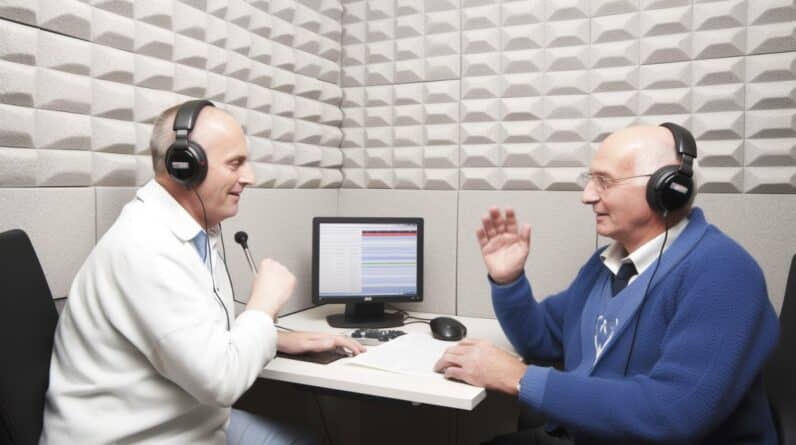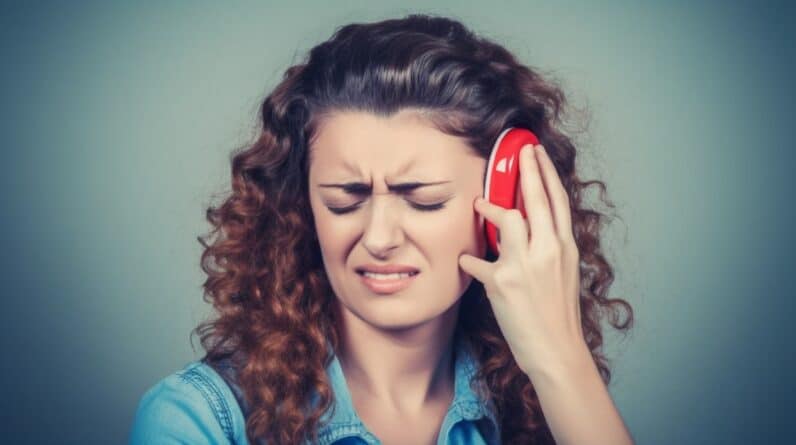
We may earn money or products from the companies mentioned in this post.
As an Amazon Associate I earn from qualifying purchases.
Table Of Contents
Introduction
Have you ever experienced a persistent ringing or buzzing in your ears? If so, you might be suffering from tinnitus. Tinnitus can have a significant impact on your daily life, making it difficult to concentrate, sleep, or enjoy everyday activities. But what if there was a natural way to help alleviate these symptoms? In this article, we’ll introduce you to acupressure as a potential treatment option for tinnitus and explore how it can provide relief for those affected by this bothersome condition.
Understanding Tinnitus
Tinnitus is a common condition characterized by the perception of sound in the absence of an external source. It can manifest as ringing, hissing, buzzing, or other noises in one or both ears. There are various causes of tinnitus, including age-related hearing loss, exposure to loud noises, ear infections, and certain medications. The three main types of tinnitus are subjective, objective, and pulsatile. Subjective tinnitus is the most common type, which only the person experiencing it can hear. Objective tinnitus, on the other hand, can be heard by both the individual and a healthcare professional during an examination. Pulsatile tinnitus is a rarer form that is often synchronized with the individual’s heartbeat. To learn more about what you can do to help tinnitus, check out our article on What Can You Do to Help Tinnitus.
Acupressure and Tinnitus
Acupressure is an ancient healing technique that involves applying pressure to specific points on the body to stimulate the flow of energy or “qi.” It is based on the principles of traditional Chinese medicine and is often referred to as “acupuncture without needles.” Acupressure can be an effective treatment for various health conditions, including tinnitus. By targeting specific acupressure points related to the ears, it can help alleviate tinnitus symptoms, improve blood circulation, and promote overall ear health. For more information on treating pulsatile tinnitus, visit our blog post on How Do You Treat Pulsatile Tinnitus.
According to the National Center for Complementary and Integrative Health, acupressure can be an effective complementary therapy for various conditions, including tinnitus. The World Health Organization also recognizes acupressure and other traditional Chinese medicine techniques as alternative treatment options for tinnitus sufferers. Furthermore, the Healthcare Medicine Institute has identified four pressure points that can help relieve tinnitus symptoms when stimulated using acupressure techniques.
Acupressure Points for Tinnitus Relief
When it comes to acupressure, specific points on the body are targeted to relieve various health issues, including tinnitus. These pressure points, also known as acupoints, play a crucial role in balancing the flow of energy or “qi” within the body. By applying pressure to these points, you can help alleviate the discomfort caused by tinnitus and improve your overall well-being. Here’s a list of four pressure points known to provide relief from tinnitus symptoms:
- San Jiao 21 (SJ21): Located just above the ear, this point can help relieve ear-related issues, including tinnitus, earaches, and hearing loss. To locate SJ21, place your finger on the top edge of your ear and slide it slightly upwards. Apply gentle pressure to this point for a few minutes to experience relief.
- Gall Bladder 2 (GB2): Found in front of the ear, GB2 is another effective point for treating tinnitus and ear-related problems. To find this point, open your mouth and locate the depression in front of the ear, where the jawbone meets the skull. Apply pressure to this point for a few minutes daily to help alleviate tinnitus symptoms.
- Small Intestine 19 (SI19): This point lies right in front of the ear, where the upper and lower jawbones meet. By applying pressure to SI19, you can help reduce the intensity of tinnitus, as well as address other ear-related issues like earaches and hearing loss. To learn more about this acupressure point and its benefits, visit Acupressure Point for Tinnitus.
- Triple Energizer 17 (TE17): Located behind the ear, TE17 is an important acupressure point for treating tinnitus and other ear-related problems. To locate this point, slide your finger along the back edge of your ear until you feel a depression. Apply pressure to this point for several minutes to experience relief from your tinnitus symptoms.
Applying Acupressure for Tinnitus
Now that you know the key acupressure points for tinnitus relief, it’s important to understand how to apply acupressure correctly to maximize its benefits. Here are some techniques and tips to help you get the most out of your acupressure treatment:
- Use your thumb, index finger, or a blunt object to apply pressure to the acupoints. Ensure that you apply gentle but firm pressure, without causing any pain or discomfort.
- Hold the pressure for about 30 seconds to a few minutes, depending on your comfort level. Release the pressure slowly and then wait for a moment before repeating the process.
- Practice deep breathing while applying acupressure to help relax your body and enhance the effects of the treatment.
- Be consistent with your acupressure sessions and perform them daily or at least a few times a week to experience significant improvements in your tinnitus symptoms.
For more tips and suggestions on natural tinnitus relief, check out our blog post on How to Relieve Tinnitus Naturally. Remember, acupressure is a complementary therapy, and it’s essential to consult with your healthcare provider before starting any new treatment plan. By incorporating acupressure into your daily routine, you can take a proactive approach to managing your tinnitus symptoms and improving your overall well-being.
Acupressure Points for Tinnitus Relief
Pressure points play a crucial role in acupressure therapy. By stimulating specific points on the body, you can help alleviate tinnitus symptoms and improve overall health. In this section, we’ll discuss four essential pressure points for tinnitus relief and provide a brief explanation of each point. To learn more about the acupressure point for tinnitus, make sure to visit our article on Acupressure Point for Tinnitus.
- San Jiao 21 (SJ21): Located just above the ear, this pressure point helps regulate the energy flow in the ear and alleviates tinnitus symptoms. Gently massage this point in a circular motion for about a minute to experience relief.
- Gall Bladder 2 (GB2): Situated in the depression right in front of the ear canal, stimulating GB2 can help alleviate various ear problems, including tinnitus. Apply gentle pressure on this point for a few minutes to reduce the intensity of the ringing sound.
- Small Intestine 19 (SI19): Found in the hollow directly in front of the ear, SI19 is another vital point for tinnitus relief. Applying pressure to this point can help relieve ear-related issues and soothe tinnitus symptoms.
- Triple Energizer 17 (TE17): Located behind the earlobe, this pressure point helps improve blood circulation in the ear and reduces tinnitus symptoms. Gently press and massage TE17 for a minute to experience its benefits.
Applying Acupressure for Tinnitus
To effectively use acupressure for tinnitus relief, it’s essential to apply the correct technique and follow some essential tips. Here are some suggestions for getting the most out of acupressure treatment:
- Start by finding a quiet and comfortable place to perform the acupressure therapy. This will help you relax and focus on the treatment.
- Ensure your hands are clean and warm. Cold hands can cause discomfort and make it difficult to apply the right amount of pressure.
- Use your fingertips or a blunt object, such as a pencil eraser, to apply pressure on the points. Apply steady, gentle pressure for about a minute, then release. You can do this multiple times, but avoid overstimulation.
- Pay attention to your body’s response. If you feel any discomfort or pain, stop the treatment immediately and consult a professional acupressure therapist.
- Combine acupressure with other natural remedies, such as relaxation techniques and a healthy lifestyle, to maximize the benefits and improve your overall well-being.
For more information on how to relieve tinnitus naturally, check out our article on How to Relieve Tinnitus Naturally. Remember to consult your healthcare provider before starting any new treatment, and always follow their advice to ensure the best results.
Acupressure Point For Tinnitus - Frequently Asked Questions (FAQ)
Acupressure is an ancient healing technique that involves applying pressure to specific points on the body to stimulate the flow of energy or ‘qi.’ It is based on the principles of traditional Chinese medicine and is often referred to as ‘acupuncture without needles.’
To apply acupressure for tinnitus, locate the specific pressure points and gently apply steady pressure for about a minute using your fingertips or a blunt object. Pay attention to your body’s response, and stop the treatment if you feel any discomfort or pain. Consult a professional acupressure therapist if needed.
Acupressure is generally considered to be a safe and non-invasive treatment option for tinnitus. However, it is crucial to consult with your healthcare provider before starting any new treatment and always follow their advice to ensure the best results. If you experience any discomfort or pain during the treatment, stop immediately and consult a professional acupressure therapist.
Amazon and the Amazon logo are trademarks of Amazon.com, Inc, or its affiliates.
No related posts.









1 Comment